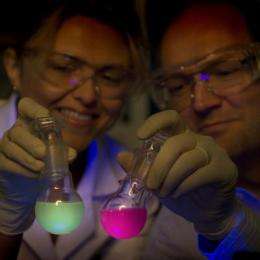Detecting cancer early

A new testing method is being developed to detect cancer soon after the tumor has formed. It will identify characteristic substances in the blood which accompany a certain type of tumor. The first steps in the development have already been completed.
The earlier the doctor finds the tumor, the better the patient's chances of recovery. A new testing method aims to detect the disease in its initial stages. The technology is based on a microfluidic chip with tiny channels in which a blood sample from the patient circulates. The chip traces marker proteins which are indicative of cancer. The measured concentration of the tumor marker in the blood will help doctors to diagnose the disease at an early stage. Similar testing systems already exist but their measurements are not very precise and they can only detect molecules that are present in the blood in large quantities. What's more, the tests have to be carried out in a laboratory, which is time-consuming and costly.
A project funded by the German Ministry of Education and Research and coordinated by the Fraunhofer FIT aims to improve matters. Biofunctionalized nanoparticles developed by research scientists at the Fraunhofer Institute for Silicate Research ISC in Würzburg are the key element in the new sensor.
"We have improved the detection limit compared with the present state of the art by a factor of one hundred," explains Dr. Jörn Probst, Head of the Business Unit Life Science at the ISC. "Whereas previously a hundred molecules were needed in a certain quantity of blood to detect tumor markers, we now need only one. This means that diseases can be diagnosed much earlier than with present methods."
But how does the biosensor integrated in the chip register the few biomolecules swimming around in the blood that are indicative of a certain disease? "We have placed antibody-occupied nanoparticles on the sensor electrode which fish out the relevant proteins. For this purpose, we repeatedly pump the blood across the electrode surface. As with a river, the flow is fastest in mid-channel and the water runs more slowly near the bank. We have therefore made a sort of fishing rod using nanoparticles which registers the antibodies in the middle of the blood flow where most proteins swim by per unit of time." If an antibody catches the matching protein, a tumor marker, the electrical charge distribution shifts and this is picked up by the electrode.
The researcher groups are now developing a first demonstrator combining four independent single-molecule-sensitive biosensors. The experts are also working on the simultaneous detection of several tumor markers, which will increase the clarity of tests. The system will be ready to enter the market in a few years' time.
Provided by Fraunhofer-Gesellschaft
















